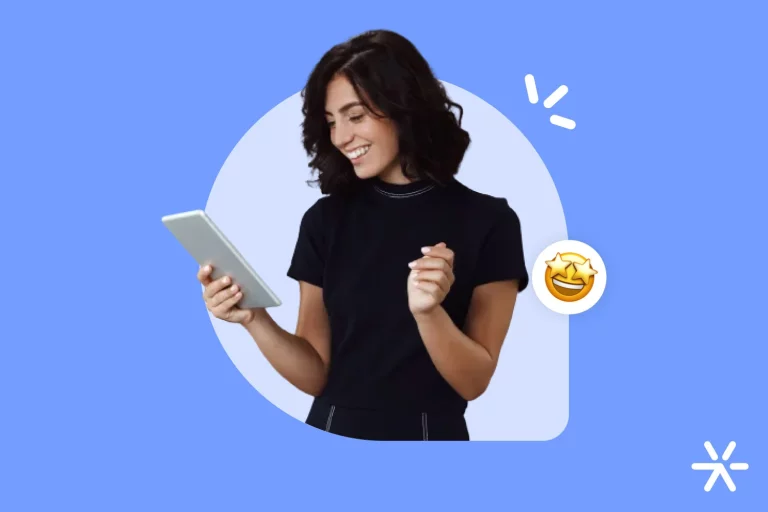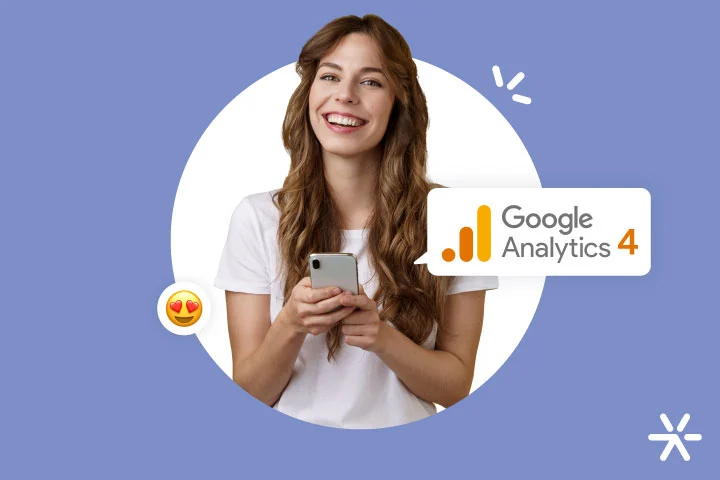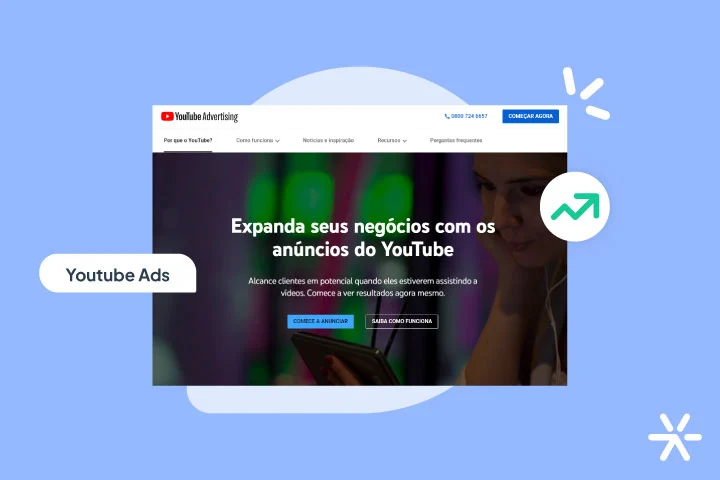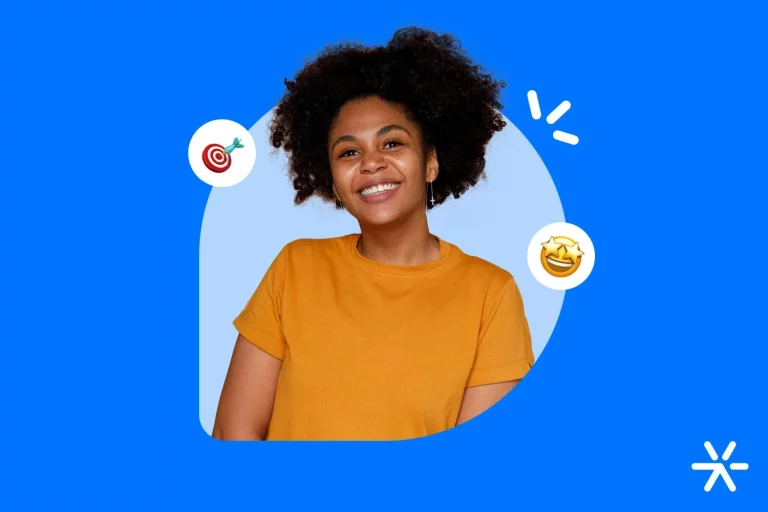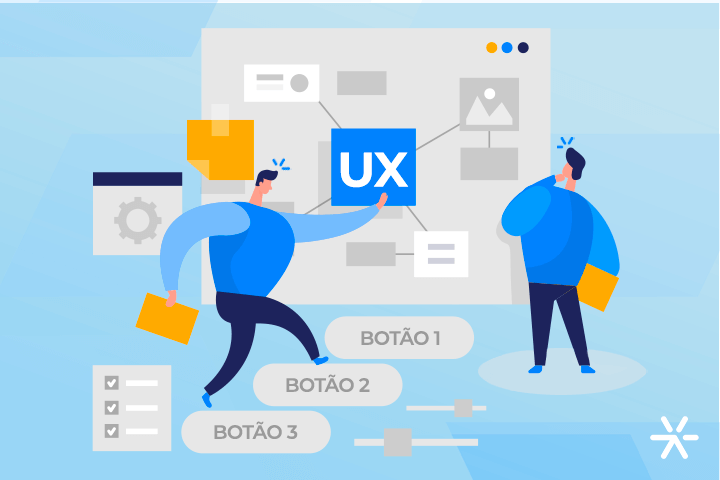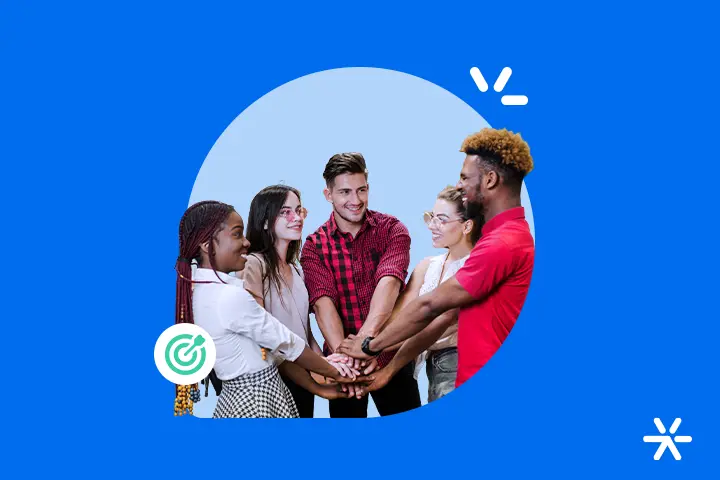Inbound Marketing in 2024: A Guide to Start or Expand
Working with Inbound Marketing in 2024, a necessity for many companies. Inbound marketing in 2023 is already a necessity for many companies, especially startups and businesses that are inherently digital.
This is because inbound marketing offers an unprecedented level of digital connection compared to traditional marketing. Many companies with this profile start their operations without even considering traditional methods.
If you are new to inbound marketing in 2024 and feel like you’re late to the party, don’t worry: the methodology is here to stay—it already has—and there is room for everyone, both veterans and newcomers.
And if you are already familiar with the methodology and want to know what’s new in 2024 for inbound, we also bring you the major trends for this year, along with a guide on what to invest in.
Ready to get started? Let’s first cover the basics:
What is Inbound Marketing?
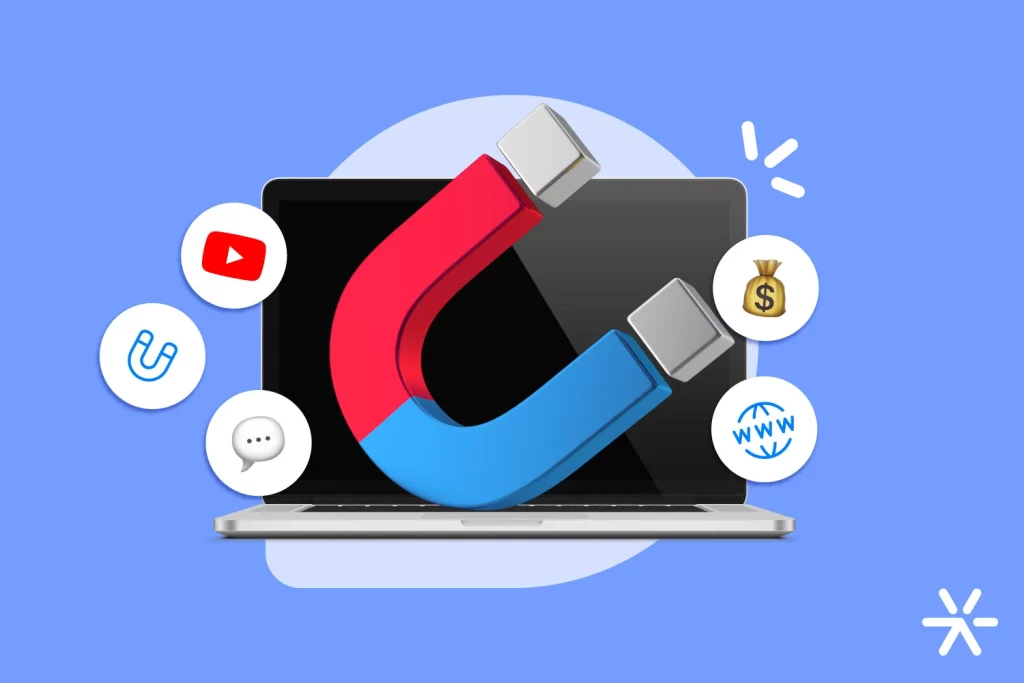
Inbound marketing is a digital marketing methodology with its main philosophy being the flow of people toward your brand, rather than the other way around.
For example: a radio ad while you are on your way to work inserts itself into your routine and places the advertiser directly into your life, without you asking for it.
In inbound marketing, it is the potential customer who seeks out the information and content that brands offer. This customer makes the decision to look for something, and therefore, they are the ones who “lead” the relationship with the advertising brand.
In fact, calling someone an “advertiser” in inbound marketing is a bit misleading—there are no traditional ads, but rather content production focused on answering potential customers’ questions and starting a relevant conversation with them.
Inbound marketing emerged around 2009 and 2010, with the efforts of Dharmesh Shah (co-founder and CTO of HubSpot) and Brian Halligan—CEO of the same company. Together they published the book that defined inbound marketing as a methodology for the first time.
But I know what you might be wondering: why would people suddenly become interested in your brand overnight?
Well, first, it doesn’t happen overnight. A good inbound marketing strategy takes a lot of time and actually never ends—it always evolves.
And second, people will be interested in your brand because you will offer something valuable to them. What exactly, you will discover now:
Is Inbound Marketing Content Marketing?
The confusion is quite common, but inbound marketing is not the same as content marketing, although content is a fundamental part of inbound.
Content marketing is a tool of inbound marketing, which also includes several others.
Email marketing, for instance, is not necessarily content marketing, but is part of the inbound strategy.
Similarly, content marketing can sometimes function on its own, without an inbound strategy behind it. The inbound methodology requires lead generation and sales closure, and content can be created without these goals.
Consider an influencer, for example. They don’t generate leads or have any concern with selling anything beyond their image and content. They use content marketing, but not necessarily inbound marketing.
The History of the Sales Funnel and Inbound Marketing
Inbound marketing operates through a funnel designed by HubSpot at the end of the first decade of the 2000s.
At that time, the only formal concept advertising had to base itself on was the sales funnel created by Elias St. Elmo Lewis in 1898.
This funnel, in addition to introducing a certain scientific rigor to the study of sales, also popularized the AIDA method—Attention, Interest, Desire, and Action.
This image is real and available on the website that gathers St. Elmo Lewis’s legacy. It was the first time someone theorized selling as something done in stages.
But here’s something interesting: in this image, the “A” block is much smaller than the others, right? That’s because, over a century ago, if you sent a letter to someone, it was almost guaranteed they would read it.
Today, not so much. To continue this conversation, we need to talk about all the stages of the inbound marketing funnel, created by Shah and Halligan at the founding of HubSpot, the world’s leading authority on the methodology.
🔎 Read also: Marketing Techniques - The 20 Best for Attracting Clients
How Does the Inbound Sales Funnel Work?
Inbound marketing also follows a funnel, but it is somewhat different—especially in the attention given to its top, which St. Elmo Lewis called Attention, but which we now call Awareness—discovery or top of funnel.
The inbound marketing funnel works by attracting people who don’t know your brand and guiding them to the point of sale.
But with a caveat: this attraction is not done intrusively. There are no commercials interrupting your music. No one is handing you a flyer that you’ll carry in your bag for years because you forgot to throw it away.
None of that. Inbound marketing needs to deliver what your potential customers want—both useful and entertaining things.
Let’s say you work with a car parts store. Instead of flyers and billboards, inbound methodology would create a YouTube channel with mechanical tutorials. This is useful and will attract thousands of people who have never heard of your brand before.
Simple to understand so far, right? Inbound marketing seeks to attract people through relevant content for them, then work through the other stages of the sale.
Don’t worry; by the end of the article, we’ll explain what to do at each stage of the sales funnel.
But now, let’s learn a bit more about the transformations inbound marketing can bring to your company:
What Inbound Marketing Delivers for a Company

Why should your company do inbound marketing in 2024? This is a question many business owners have been asking since the methodology was first implemented by HubSpot itself.
The answer is clearly written in HubSpot’s own trajectory. As the leading reference for the method in the world and offering quality content, the company’s website receives more than 5 million visits per year, according to SEMRush.
All these visitors are at the top of the funnel and come to HubSpot through its content marketing efforts.
But we’ve seen the inbound marketing funnel before and know that the top of the funnel is just the first stage. The real value of inbound marketing is what it does with these people: making sales easier.
Let’s discuss these points now, starting by delving a bit deeper into visitor generation:
More Visitors to Your Website
Inbound marketing, working alongside content marketing, has the power to bring more visitors to your website—and that’s great for two main reasons.
The first reason, and the most obvious, is that more people on your site means more opportunities to make sales and more chances to get spontaneous and organic quotes—those that come without you needing to run ads.
The second reason is even more interesting. Those who invest in ads are borrowing an audience. If you run TV commercials, you’re advertising to the broadcaster’s audience.
If you work with paid media, you’re advertising to the audience of Google or social networks.
But when you work with content marketing within an inbound strategy, you are creating your own audience.
And this audience is created with a much lower investment than running TV commercials periodically or relying on Google Ads to keep attracting people to your site.
Once you attract people and build your own audience of those interested in what you have to say, the next stages of inbound marketing come into play:
Greater Lead Generation
Lead generation within inbound marketing directly relates to what we’ve been discussing—creating audiences through visitors, etc.
When these visitors arrive at your site, you have a significant opportunity: to turn them into leads.
Leads are all the people who entered your site as visitors and showed interest in some material enough to leave their contact information to download it.
And not just that: they are also the people who subscribe to a newsletter, register to receive promotions, or directly reach out asking for a quote.
When a visitor becomes a lead, you’re one step closer to making a sale. And in the inbound methodology, leads are the fuel that keeps your sales consistently rising.
Better Utilization of the Sales Funnel
The goal of inbound marketing is to create a digital structure for the full utilization of the sales funnel. Once everything is up and running, sales will happen naturally.
An inbound sales funnel establishes a very clear path for sales: from visitor to lead, from lead to customer.
While 10,000 people enter the inbound marketing funnel monthly, you will also be generating a significant number of new leads, in addition to closing sales. All at the same time.
But it also offers a unique possibility: measuring the success of each of these stages.
The greatest advantage of inbound marketing is that, despite the lengthy individual journey of a visitor who becomes a customer, you gain significantly from the number of leads you generate.
And the ability to measure each stage, identify bottlenecks, and act on a micro level within the strategy elevates inbound marketing to a true sales machine.
Lower CAC
Advertising on television, even locally, is expensive. You pay for the production of the material (which will only be aired a finite number of times), pay the agency, need to register with ANCINE, and the commercial will run only at certain times.
Imagine the CAC—customer acquisition cost—of a company that relies solely on commercials? It’s astronomical!
This applies to other sales methods as well: when compared to inbound marketing, CAC is always a standout metric.
Top-of-funnel inbound marketing strategies tend to have lower costs than traditional marketing and last longer.
Inbound marketing uses simpler and longer-lasting resources. An article on a blog, for example, is cheaper than producing a traditional advertising piece in physical media and generates leads for years.
But now that we’ve made a thorough comparison, let’s clearly see the difference between inbound marketing and traditional marketing:
What’s the Difference Between Inbound Marketing and Traditional Marketing?
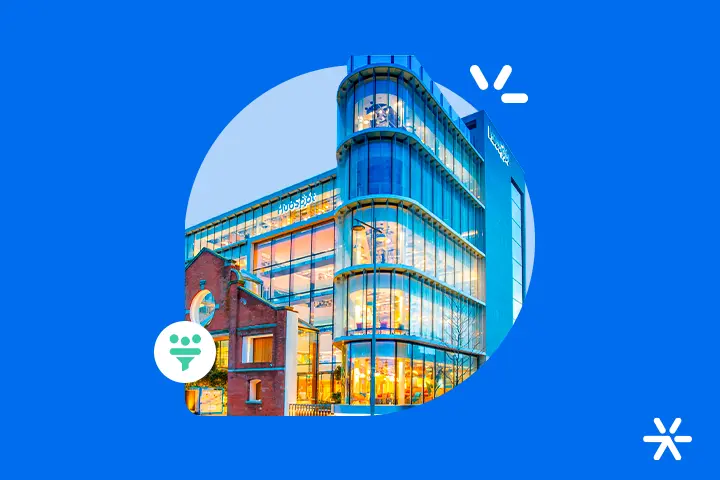
The main difference between inbound marketing and traditional marketing lies in the direction of communication.
Not the meaning—but the direction. Where is the communication going and where does it originate?
To understand the differences between inbound marketing and traditional marketing, we need to make this concept very clear.
In fact, the difference is already written in the name. Hint: it has to do with “in” and “out.” Learn more:
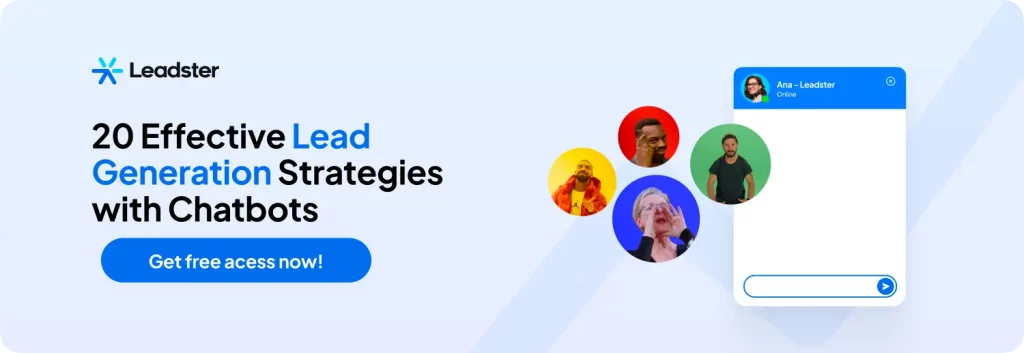
Inbound Marketing vs. Outbound Marketing
The word “inbound” means, in English, “something that comes towards you.” The word “outbound” means the opposite—something that moves away from you.
The difference between inbound marketing and outbound marketing is basically the same. In inbound, you don’t go after customers: they come to you to consume your content.
In outbound marketing, it’s the opposite: customers don’t come to you; you go where they are.
This is the most accepted way to understand the difference between inbound marketing and traditional marketing, but it needs to be understood with care.
First: in some cases, inbound marketing does indeed go after your audience.
A strategy brands often use is creating reviews and unboxings of their products on YouTube, for example. This involves leveraging an existing style of content already consumed by thousands of people.
Other brands post in specific Facebook groups, for example. Others partner with influencers. All of this is about finding the audience.
The difference between inbound and outbound, however, lies in the objective. Inbound aims to bring visitors to the site and convert them into leads to further work the sales funnel.
Outbound strategies are simpler, mainly focused on sales results.
Another major difference between inbound and outbound lies in metrics. Inbound, being natively digital, offers all possible metrics to track. Outbound doesn’t typically have many—like how to know how many people read your billboard?—besides the number of sales.
And speaking of which:
Is Inbound Marketing Always Digital?
Inbound marketing is natively digital—meaning all inbound strategies originate online.
Deliveries and content types can vary, including occasional giveaways and even printed content. But the entire strategy behind lead generation through visitors interested in your content is digital.
Inbound being digital and only digital has a simple explanation: result measurement. According to the methodology, you could very well open a shoe store and offer free slippers to anyone who left their email.
Then, with those emails, you could send newsletters and targeted communications to close more sales. Is it possible? Of course!
The problem is you wouldn’t know how many of those people with free slippers made a purchase of your shoes. This measurement is very difficult to make and practically impossible to guarantee results.
And to offer those slippers, you would need to make a significant investment, with no guarantee of success and practically in the dark. It’s very risky.
For this reason, inbound marketing strategies will always be digital. But be careful: not everything in digital marketing is inbound!
The top 6 inbound marketing strategies for 2024
Inbound marketing in 2024 is undergoing some changes, but none are significant enough to shake its foundations or render it unfeasible.
On the contrary. Many are focused on scaling the methodology and working to make inbound more democratic, popular, and easier to implement.
Overall, few things change drastically in inbound marketing, as it is a methodology. Its set of tools will still promote the same ideals, even though the tools themselves evolve over time.
Think: the plow revolutionized agriculture, but it needed to be pulled by an ox. Today, the tractor has replaced the ox, but plowing the land is still essential to reap the rewards.
Here are the top 6 inbound marketing trends for 2024:
More Objective and Specific Content Creation
Google is going through a delicate moment. After over 30 years shaping the internet and, consequently, digital marketing, it is being challenged by artificial intelligence.
OpenAI recently launched a test of its ChatGPT application. This app allows entire articles on a given topic to be written in a matter of seconds.
The trend in content marketing—one of the biggest tools in inbound marketing—has always been to create longer content and publish it on blogs to make it attractive for the first page of Google.
With the development of tools like ChatGPT, the trend is for texts to become more specific, and therefore, shorter.
And when I say specific, I mean truly specific. Simple questions will be easily answered by artificial intelligence, so content marketing needs to tackle the more difficult questions that AI cannot answer using the internet.
Content Curation Through Newsletters
Imagine living in a world where you no longer need to ask Google— you’ll have an app that answers everything you need.
This is what tools like ChatGPT, mentioned above, can do. Today, developers and programmers prefer to ask coding-related questions to ChatGPT’s beta rather than Google—the AI provides better answers.
As a result, it’s likely that most people, in the near future, will not consume content as they do today—seeking answers. Content on the internet will be freer and more interesting.
This is already happening today. Blogs on Medium, for example, cover a wide range of topics. The WeTransfer blog, for instance, produces journalistic content, not “how to shorten your links.”
Following this shift towards more authorial blogs are also content curation newsletters.
The concept is simple: you subscribe to one and start receiving, via email, selected content just for you. News, articles, whatever it is: there’s already a newsletter for it that you can sign up for.
For 2024, curated newsletters are a huge trend you should keep an eye on—even if just to consume.
Conversational Marketing
According to a study by Drift, the number of companies using chatbots more than doubled between 2019 and 2020, and has only increased during the pandemic to this day.
The company, a global reference in conversational marketing, also shows that 44% of people who visit a website to ask questions expect an immediate response from the site.
And imagine: depending on your industry, you’ll be working with clients who are home-office based anywhere in the world. How can you offer immediate responses at 4 a.m.?
Only with chatbots and conversational marketing. The growth of this tool continues to rise and deserves much attention throughout 2024.
Webinars
Webinars have been trending ever since video recording became much easier, and they gained even more strength during the pandemic years.
Hosting a Webinar is much more interesting and easier than creating an infographic, for example. And according to the Content Marketing Institute, Webinars were one of the formats that brought the best results in 2022, along with marketing events:
Hosting Webinars is essential not only to generate more leads but also to convert them and have some form of contact with them almost immediately.
Investing in them is also a trend because videos, in general, are trending today. And a single Webinar generates content for dozens of shorter videos for YouTube.
Humanized Content
If everything we’ve said about ChatGPT comes true as we expect, soon we’ll see a new type of content emerge: more humanized and less optimized for search engines.
Due to Google’s dominance over content marketing, for years companies focused all their efforts on answering users’ questions on the search giant.
It’s possible, with keyword research, to know exactly what people are looking for on Google.
But this dominance is starting to be threatened by artificial intelligence. And as it advances, fewer people will seek their answers on Google.
This opens the door for a different type of content: one that is more humanized, that relates to readers’ daily lives, and is created almost in an artisanal way.
How Does the Inbound Methodology Work?
We’ve covered everything about inbound marketing, all about its trends for 2024, and now we just need to fulfill a promise made at the beginning of the article: explaining the sales funnel.
This section is here for that: we’re going to show you how each stage of the inbound sales funnel works and also show you the main methods used in each of them.
Shall we?
Attraction
The first stage of the inbound sales funnel is attracting strangers to your website, where they become visitors. This is the top of the funnel.
You’ll notice that the triggers for the next stages of the inbound sales funnel are always some kind of transformation—the first one being this: from people who don’t know you to people who do.
Usually, people in the attraction stage are not looking for your brand: they are realizing they have a problem and want to solve it.
An example: You try to start your car, and it’s stalling. You just found out you have a problem and want to solve it, so you go on Google, YouTube, or even TikTok and search for “car stalling.”
And that’s where I come in: I have an online car parts store, and I wrote, with the help of a mechanic, the article “Car Stalling? Check These 5 Quick Fixes Before Taking It to a Mechanic.”
You’ll read my article, do the checks, and understand what your problem is. In the middle of the article, I place a banner offering my e-book: “50 Simple Problems Mechanics Charge a Lot to Fix.”
When you download this e-book, you’ve just moved to the next stage of the inbound sales funnel:
Conversion
This is the second stage of the inbound sales funnel, also marked by a conversion: turning a visitor into a lead.
Here, in the middle of the funnel, lies the backbone of your inbound marketing strategy. The more leads you generate, the more sales you’ll have.
In fact, the most guaranteed way to increase sales is by increasing your leads.
Once a visitor agrees to leave their contact information on your site, you’ve generated a lead. This can be done in various ways: attending a Webinar, downloading an e-book, accessing a checklist, and so on.
When you convert a visitor into a lead, it’s time to work hard on nurturing them to turn them into a customer.
This can be a short or long process, depending on the lead, and is usually done through email marketing strategies.
You will keep sending materials to your lead, ask some questions in each of these materials, qualify them, and offer promotions when they are close to making a purchase. Over time, they will trust your company and make a purchase.
Lead nurturing is so important and has so many variables that we have an entire article dedicated to it. I highly recommend reading it.
Sale
Look at that: you’re reaching the bottom of the funnel! With all these lead nurturing strategies, the chances of making a sale are much higher than with traditional marketing methods.
Many people who don’t work with inbound think it’s too much work. Seeing everything that’s been done so far, it’s easy to imagine that the effort isn’t worth it.
But the point is that the entire journey up to now has been automated. All the lead nurturing work we mentioned, for example, is done automatically.
So, the methodology is simple to apply, and the funnel is called a funnel for a reason: thousands and thousands of visitors can enter your site each month, and the number of sales will depend on your ability to convert leads and then close deals with them.
Retention and Repurchase
The final stage of the sales funnel is retaining these customers, turning them into brand evangelists and loyal clients.
This is extremely important because, as you’ve seen so far, there’s considerable effort involved between the top and bottom of the funnel.
Customers who buy from you again after a first purchase have a lower CAC (customer acquisition cost). You’ve already spent your budget and time moving them through each stage of the funnel. So keeping them buying is a very valid strategy because it reduces your costs.
We have an article that focuses solely on this part of the sales funnel—the post-sales process in digital marketing. It’s definitely worth reading!
How to Start Doing Inbound Marketing in 2024?
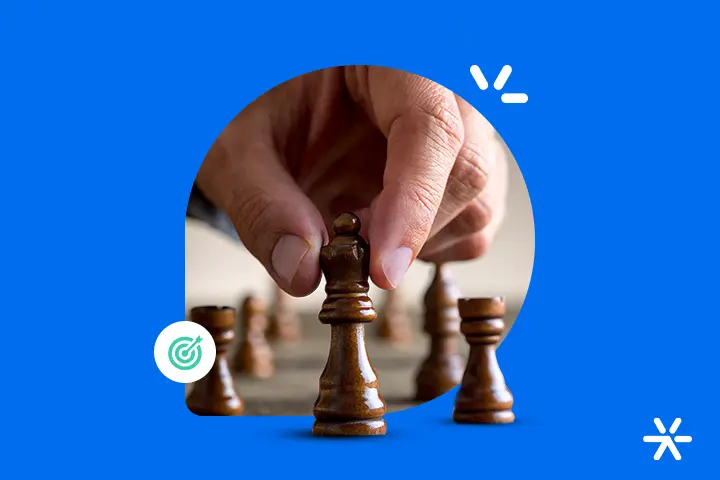
As you can see, the inbound marketing methodology isn’t going away anytime soon.
Quite the opposite, it’s only going to become more relevant.
Starting in 2024 is a great time. There are thousands of videos on the internet teaching how to do inbound marketing. And there are thousands of agencies specialized in it.
If you’re starting now, on your own, here’s the study order I recommend:
- Take the Hubspot Inbound Marketing course—it’s free;
- Take courses on SEO and SEM (search engine marketing);
- Take courses to learn more about content marketing;
- Build your website with the best SEO practices;
- Create social media profiles too!;
- Identify your target audience;
- Design strategies for each stage of the sales funnel;
- Start producing your content on your website and share it wherever you can.
It’s a step-by-step process that may seem simple, but in each of these stages, you’ll have many opportunities to learn more. Only through practice will you be able to make your inbound marketing efforts soar!
I hope this article has helped you understand everything about inbound marketing in 2024 and beyond. If you have any questions, leave a comment! We answer all of them, one by one.
Best regards, and see you in the next article!



